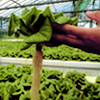At first, we thought that the project was really difficult as no one had done a 1000-word essay before. However, we did not give up hope immediately and it turned out that the project was not as tough as we initially thought it was. Our group members all had busy schedules (when one was free, the other wasn’t) and it was really difficult to find time to meet up. Finally, we thought up of a different alternative and we decided to do an individual research of at least 200 words before sending it to one person to collate all the information and to remove any irrelevant information. It turned out to be rather effective as everyone was co-operative.
It was a very enjoyable experience to be able to work with my teammates.
1. PersistanceWe often had a lot of assignments to complete as homeworks, therefore we had to stay up late to finish the project. Also, we did not think of giving up even though we thought it was a difficult task to do.
2. Managing ImpulsivityWe tried our best at completing the project before doing anything else.
3. Thinking and Communicating with Clarity and PrecisionThe topic of the project was a little tricky to understand. At first, we thought it meant Singapore’s whole food supply including meat and fruits. We also thought we could just state the advantages and disadvantages of hydroponics. We looked more closely at the topic and realized it was not what we thought it meant. Later, we could clearly understand the topic as we applied the Habits of Mind "Thinking and Communicating with Clarity and Precision".
Also, we communicated with clarity and precision by communicating with one another how we were to present the project in the best way possible.
4. Gathering Data through All SensesWe gathered our data (or research) through all senses. Such as using our eyes to read the internet and the textbook, using our ears to listen out for points in class etc.
No, Singapore cannot become food sufficient with the help of hydroponics.
Even though Singapore can produce many types of vegetables for our population, there are some types of food such as wheat and rice that is not produced in Singapore. Rice is the staple food in Singapore as many people eat rice. It is included in almost all of the different ethnic cooking such as steamed rice, chicken rice, nasi lemak etc. However, rice is not produced in Singapore, and Singapore has to rely on overseas import for its supply of the country’s staple food.
A few other reasons why we feel Singapore cannot become food sufficient with the help of hydroponics is because of singapores’s scarce amount of land, high capital investment, shortage of trained workers, high set up cost and high maintenance. Even though hydroponics farming saves space, Singapore does not have enough land to build enough farms for self sufficiency. These farms only produce a small percentage of the amount needed by the country’s population and it is not enough for Singapore to become food sufficient. A huge percentage of our food comes from overseas export. The land in Singapore is also needed for other more important projects such as the building of homes, of schools, hospitals and transport.
High set up cost, high capital investment and high maintenance (i.e. constant supervision, pH testing, light adjustments and support) are constraints as well. The money would be put to better use if it were used for scholarships, researches etc. Also, it is not very cost effective if Singapore uses a lot of money for set up cost and maintenance and the farms produce only very little of what is needed. Furthermore, there is a shortage of trained workers. Trained workers are needed to supervise the computers and machines and more money would be used to train new workers.
Some advantages in hydroponics are: when removing the crops, it can be packaged and sold when alive to retain its freshness for a longer time. There is no necessity of any soil and this eliminates occurrence of soil borne diseases. This, and reduced weeds lead to a lower need of pesticides. With hydroponics, there is no soil contamination of edible crops and less usage of water.
With solution culture, there is no need of disposing the solid medium and you get to exercise greater control over root zone environment as the roots can be seen. It is best to adapt hydroponics in areas where the soil is not suitable for plant growth like Antarctica and space colonies.
Though advantageous, there are some disadvantages to hydroponics. It needs more knowledge to be implemented, is more expensive than geoponics and requires more maintenance than geoponics. The failing of the timers or pumps or clogging of the system can lead to a quick death of plants. However, hydroponics is considered to be futuristic in its approach, and helps in plant

- While removing soil-grown crops from the ground effectively kills them, hydroponically grown crops such as lettuce can be packaged and sold while still alive, greatly increasing the length of freshness once purchased.
- Solution culture hydroponics does not require disposal of a solid medium or sterilization and reuse of a solid medium.
- Solution culture hydroponics allows greater control over the root zone environment than soil culture.
- Over- and under-watering is prevented
- Hydroponics is often the best crop production method in remote areas that lack suitable soil, such as Antarctica, space stations, space colonies, or atolls such as Wake Island.
- In solution culture hydroponics, plant roots can be seen.
- Soil borne diseases and weeds are virtually eliminated.
- Fewer pesticides may be required because they are kept in greenhouses or are protected by netting.
- Edible crops are not contaminated with soil.
- Water use can be substantially less than with outdoor irrigation of soil-grown crops.
- Many hydroponic systems give the plants more nutrition while at the same time using less energy and space.
- Hydroponics allow for easier fertilization as it is possible to use an automatic timer to fertilize the plants.
- It provides the plant with balanced nutrition because the essential nutrients are dissolved into the water-soluble nutrient solution.
- Allow us to grow our produce organically, without harmful pesticides/fertilizers
- Water can be conserved since it is re-circulated
- Very low-maintenance since it is grown in water, we do not have to do any digging or weeding
- Plants grow faster, about 30-50% quicker than growing in soil
- Possible to grow produce year-round (means we can enjoy fresh vegetables and fruit anytime of the year)

- If timers or electric pumps fail or the system clogs or springs a leak, plants can die very quickly in many kinds of hydroponics systems.
- Hydroponics usually requires a greater technical knowledge than geoponics.
For the previous two reasons and the fact that most hydroponics crops are grown in greenhouses or controlled environment agriculture, hydroponics crops are usually more expensive than soil-grown crops.
- Solution culture hydroponics requires that the plants be supported because the roots have no anchorage without a solid medium.
- The plants will die if not frequently monitored while soil plants do not require such close attention.

- Hydroponics has been widely misconceived as miraculous. There are many widely held misconceptions regarding hydroponics, as noted by the following facts:
- Hydroponics will not always produce greater crop yields than with good quality soil.
- Hydroponics plants cannot always be spaced closer together than soil-grown crops (geoponics >> means growing plants in normal soil) under the same environmental conditions.
- Hydroponics produce will not necessarily be more nutritious or better tasting than geoponics (growing plants in normal soil).
Main Disadvantages:
High Setup Cost And Time:
The most conspicuous of all the hydroponics disadvantages is the high cost of setting up a hydroponics system of growth. The equipment required for hydroponics cultivation is fairly expensive as compared to that required in the traditional process of growing crops in soil. Also, setting up a hydroponics garden demands significantly more time than that spent in cultivating plants in soil.
Care And Maintenance:
Caring for hydroponic plants is more difficult and must be done on a frequent basis, mostly on a daily basis. The maintenance of hydroponics systems also demands more time and effort than conventional forms of cultivation. Passive hydroponics systems are comparatively easier to maintain and are less costly than active hydroponics systems, and hence are recommended for beginners.
Steady Supply Of Power:
One of the hydroponics disadvantages is the need to provide a steady supply of power to the system so as to keep the lighting, nutrient supply, and other power-operated elements running. In case of power interruption, a back up power source (like a battery) will be required for lighting and often times the cultivator needs to water the plants manually.
Technical Knowledge:
An often overlooked disadvantage of hydroponics cultivation is the degree of technical knowledge of the hydroponics system. The healthy growth of plants and their maximal production depends intimately on the cultivator’s knowledge of the exact proportion of various elements that keep the plants growing normally. This includes knowledge of the right kind of nutrients and their adequate amounts for various kinds of plants, the best kind and optimum level of lighting provided in various stages of the growth of plants, and so on.
Diseases:
Growing plants hydroponically does not mean that they are safe from all kinds of plant diseases. While hydroponics plants are fairly free from soil-borne diseases and pests, water-borne diseases do affect these plants, especially in a series of gardens that share water and nutrient solutions.
Limitations On Plant Variety:
Another one of the less conspicuous hydroponics disadvantages is the limitation on the variety of plants that can be grown hydroponically. While most plants can theoretically be grown in hydroponic systems, practically it is very difficult to grow certain varieties of plants, like strawberries, watermelons, and squash.
Disadvantages of Hydroponics Gardening
The disadvantages of raising plants through hydroponics gardening are that the fruits or vegetables will be more expensive than those grown in soil. This is because the hydroponics garden must have a stand by electricity generator unit for fertilizer timers and pumps to work in case of power outage. The knowledge of the technology used in hydroponics gardening also needs expertise which will cost more than ordinary gardeners.
People can build hydroponics gardens in a small scale and even tend to the plants themselves with the right background, research and resources. In larger scale gardens, the structures that hold the plants above the solution or medium, and the buildings themselves used to house the plants will cost a lot of money. This way of gardening is not as easy as it looks and is not as feasible to take the place of land based gardening.
Conclusion
In conclusion, we feel that Singapore cannot become food sufficient with the help of hydroponics. The growing population would further add to the constraint of there being insufficient amounts of food supply for the population. Through the above reasearch, we have proven that there are many constraints which makes Singapore unable to become food sufficient. Thank you.
- High set up cost
- Growers require skill and knowledge to maintain optimum production in commercial applications
- Because each plant in a hydroponics system is sharing the exact same nutrient, diseases and pests can easily affect each plant.
- Plants react quicker to changes in the environment, however, if this change is for the worst, plants will quickly react to it; showing signs of deficiency or trouble.
- Hot weather and limited oxygenation may limit production, and can result in lost crops
- High maintenance (i.e.. constant supervision, pH testing, light adjustments, support)
- Requires specialized knowledge and equipment.
- It is a more complicated and involved process than dirt farming.
Why Singapore cannot become food sufficient with the help of hydroponics:- Some types of food are not produced in Singapore such as rice and wheat
- The food products produced by the hydroponics farms are not sufficient to support the country.
- Singapore has a scarce amount of land and would not be able to support many hydro-technology farms
- High capital investment, high set up cost and high maintenance is needed to build and maintain a hydro-technology farm
- There is a shortage of trained workers
History of the AVA:The Agri-Food and Veterinary Authority (AVA) was established on 1 April 2000 to ensure a resilient supply of safe food, to safeguard the health of animals and plants and facilitate agri-trade for the well-being of the nation. Our work builds on the foundations developed by the Primary Production Department (PPD).
AVA strives to provide Singapore with an adequate and stable supply of food. We achieve this by diversifying the sources of supply to Singapore through efforts in the following areas :
1) Approving new sources for importation of food by the private sector
2) Participating in trade missions to seek out new sources
3) Collaborating with the private sector, such as through AVA's agri-food
Business Clusters in food sourcing
AVA's food diversification strategy allows Singapore to have resilience in supply. It gives us increased flexibility and adaptability when supply from a particular source falls short. Coupled with Singapore's open market, source diversification has helped to maintain stability in the prices of our food. Our local farms also provide a small measure of our vegetables, fish and egg supply. AVA helps local farms to optimise their production by assisting them to employ intensive farming systems and safe food production practices.
(Promoting agro-technology): The challenge of maximising productivity from limited agricultural land and sea is addressed by agro-technology and agri-biotechnology. By providing technical expertise and consultancy services both locally and in the region, the AVA is making investments in potential new sources of food supply for Singapore.
(Agro-technology Parks): The need to maximise output from Singapore's limited agricultural land led AVA to spearhead a move towards agro-technology, which is the application of modern technology and life sciences to intensive farming systems.
 (1) (2) (3) (4) (5) (6) (7)Done By:
(1) (2) (3) (4) (5) (6) (7)Done By:Leong Jia Yu (5) - Collating and piecing information together, Typing out the essay
Lin Sihan (8) - Researching information
Melissa Teo (9) - Researching information
Ng Jia Le (10) - Researching information, Creating + Designing blog and Writing research material.
Sim Qing Qing (15) - Researching information
(!!!) This is just research for hydroponics, not the 1000-word essay :)★-----------------------------------------------------------------★Hydroponics, from the Greek words
hydro (water) and
ponos (labour),
is a method of
growing plants using mineral nutrient solutions instead of soil.
Terrestrial plants may be grown with their roots in the mineral nutrient
solution only or in an inert medium, such as perlite, gravel, or mineral wool.
Plant physiology researchers discovered in the 19th century that plants absorb
essential mineral nutrients as inorganic ions in water.
In natural conditions, soil acts as a mineral nutrient reservoir but the soil itself
is not essential to plant growth. When the mineral nutrients in the soil
dissolve in water, plant roots are able to absorb them.
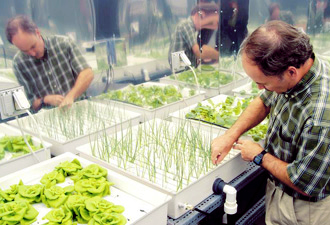
When the required mineral nutrients are introduced into a plant's water
supply artificially, soil is no longer required for the plant to thrive.
Almost any terrestrial plant will grow with hydroponics, but some will do better than
others.
It is also very easy to do; the activity is often undertaken by very
young children with such plants as watercress. Hydroponics is also a standard
technique in biology research and teaching.
Source:
click! and
click! "Can Singapore become food sufficient with the help of Hydroponics?"
In groups of 4s, discuss on the topic and create a blog.
You will write a 1000-word report on the topic.










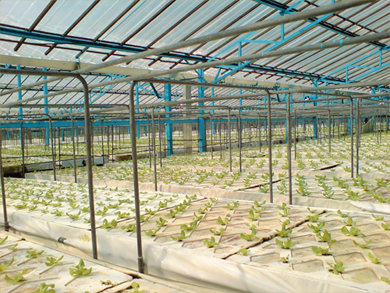

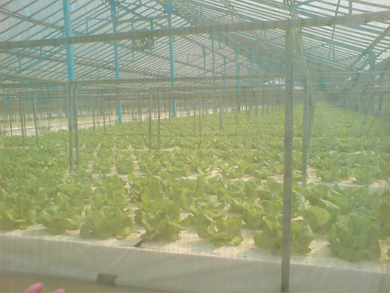
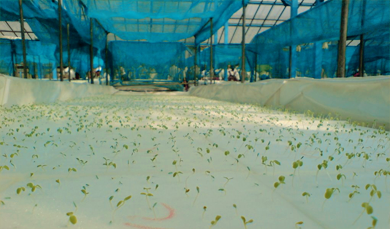
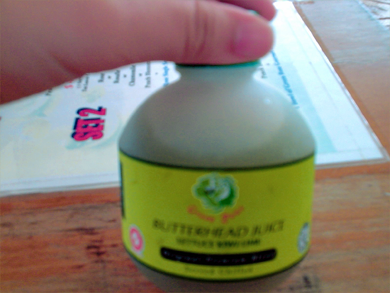
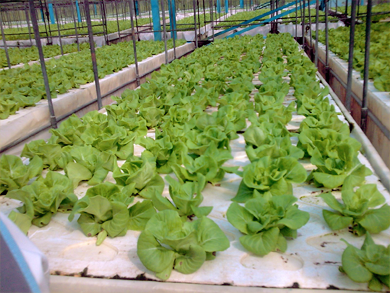

 Welcome to
Welcome to 